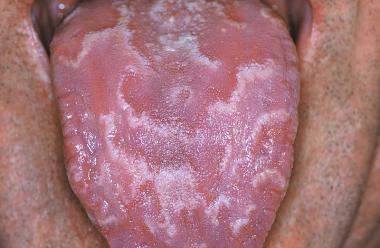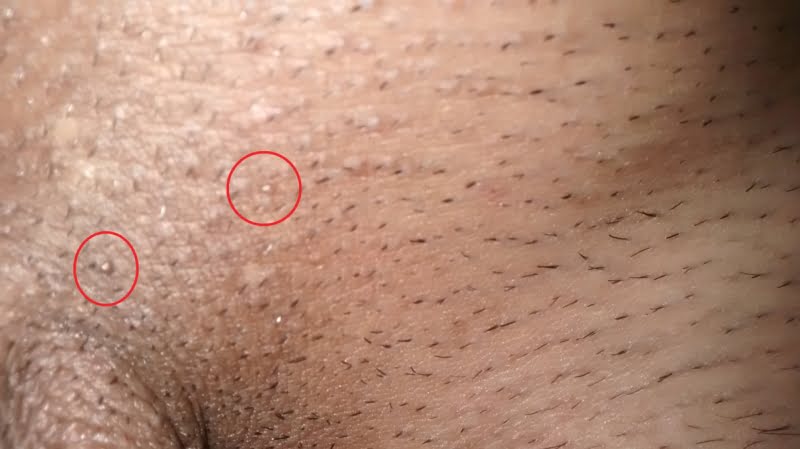Geographic tongue is an inflammatory condition which is affecting the surface of your tongue but it is harmless. Our tongues are usually covered with tiny, pinkish – white bumps (also known as papillae) which are fine, short and hairlike projections. When you have geographic tongue, then patches on the surface of your tongue are missing papillae and they appear as smooth and red islands and often they are with slightly raised borders. These patches give your tongue a maplike or geographic appearance. These lesions often heal in one area and then they move to a different part of your tongue. Benign migratory glossitis is another name for the geographic tongue. You may think that this condition is looking alarming but it does not cause health problems and what is more important is that this condition is not associated with infection or cancer. This condition in some cases can cause tongue discomfort and increased sensitivity to some substances such as salt, spices and even sweets. This condition is affecting about 1% to 3% of people. [1] Also this condition can show up at any age. But this condition tends to affect the middle – aged or older adults more often. [2] Also this condition is more common in women compared to men. About one in ten people with this condition may have mild discomfort or a painful or burning sensation. They are sensitive to toothpaste, cigarette smoke and hot, spicy or acidic foods.
Symptoms of geographic tongue
Here are the signs and symptoms of geographic tongue:
- Discomfort, pain or burning sensation in some cases, most often related to eating spicy or acidic foods
- Come and go or change very quickly in days, weeks or moths
- Frequent changes in the location, size, color and shape of lesions
- Smooth, red, irregularly shaped patches (lesions) on the top or side of your tongue
- Last up to a year
- Appear one area and then they move to another area
- Have a white or light – colored border
But there are many people who have geographic tongue but they do not have symptoms. This condition can continue for days, months or years. This problem often resolves on its own but it can appear again at a later time. This is a minor condition but in some cases it can be uncomfortable. But the lesions on your tongue can indicate more serious conditions of the tongue or diseases which are affecting your body in general. If you have noticed that you have lesions on your tongue that do not resolve within ten days, then you should visit your doctor or dentist. Many people do not know that they have geographic tongue until their dentist or other health care provider diagnoses this condition during an oral exam.

Causes for geographic tongue
The cause for this condition is not known and there is not a way to prevent it. There may be a link between geographic tongue and lichen planus and geographic tongue and psoriasis. But there should be done a lot more studies in the future to understand the possible causes for this condition.
Risk factors: There are many studies in which scientists are trying to discover factors which can increase the risk of geographic tongue and these results are mixed. Here are factors which are associated with an increased risk of geographic tongue:
- Fissured tongue: People who suffer from geographic tongue often have another disorder which is known as fissured tongue. This condition has the appearance of fissures (deep groves) on the surface of your tongue. [3]
- Family history: There are some people who suffer from geographic tongue and they have a family history of this disorder. This means the inherited genetic factors can increase your risk of geographic tongue. [4]
Complications: This condition is a benign condition. It does not pose a threat to your health, it can cause long – term complications or it can increase your risk of having major health problems. The anxiety about Geographic tongue is fairly common because (1) it may be difficult to be reassured that there is, in fact, nothing seriously wrong and (2) the appearance of tongue may be embarrassing, depending on how visible the lesions are. [5]
References:
[1] The American Academy of Oral Medicine. Geographic tongue. 2015. Retrieved from www.aaom.com/geographic-tongue
[2] Nandini DB, Bhavana SB, Deepak BS, Ashwini R. Paediatric geographic tongue: A case report, review and recent updates. Journal of Clinical and Diagnostic Research. 2016;10(2):ZE05–ZE09.
[3] Picciani BLS, Souza TT, Santos VCB, et al. Geographic tongue and fissured tongue in 348 patients with psoriasis: Correlation with disease severity. The Scientific World Journal. 2015. Retrieved from www.hindawi.com/journals/tswj/2015/564326/
[4] Hamissi JH, Esfehani M, Hamissi Z. Case report treatment of geographic tongue superimposing fissured tongue: A literature review with case report. Scholars Journal of Dental Sciences. 2015;2(7):409-13.
[5] Tavangar A, Saberi Z, Rahimi M, Pakravan F. Anxiety and salivary level of alpha-amylase in patients with geographic tongue: A case control study. The Open Dentistry Journal. 2019;13:209-13.





[…] (the edge of your vision) at first. Usually both eyes are affected but this condition can be worse in one eye. If you leave this condition untreated, then it can eventually lead to blindness. In very rare […]